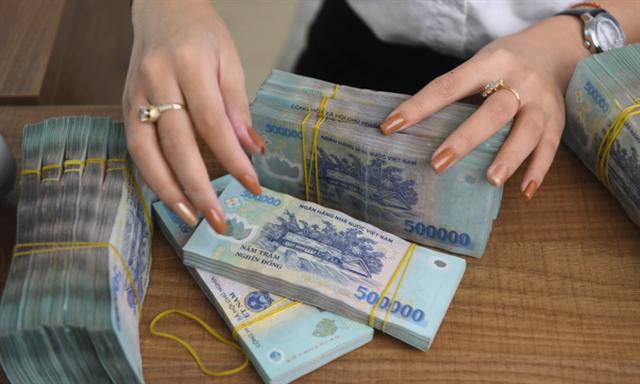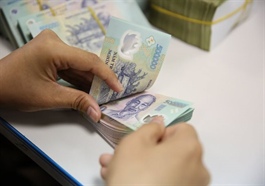Vietnam household debt surges: HSBC report
Vietnam household debt surges: HSBC report
Loans to households by the four major state-owned lenders rose from 28 percent of total loans in 2013 to 46 percent last year, according to HSBC.
An employee counts Vietnamese banknotes at a bank in Hanoi. Photo by VnExpress/Giang Huy.
|
In its latest ‘Vietnam at a glance - What do banks’ balance sheets tell us?’ report, in which they analyze the balance sheets of Vietcombank, BIDV, Vietinbank, and Agribank -- which accounted for half of all outstanding loans last year – the bank’s analysts said though growth in household debt moderated significantly in 2020 with a 1 percent increase (compared to an average 3 percent since 2013), the level remained elevated.
Consumer loans accounted forroughly 50 percent of the workforce’s income last year, which they said is a high ratio for an emerging market like Vietnam.
"Elevated consumer leverage could drag down future consumer spending, especially as labor market conditions have been severely impacted by the pandemic," the report said.
Although Vietnam’s economy is in better shape than those of its regional peers, its labor market weakness remains a concern for the recovery of domestic demand.
Despite unemployment falling to 2.4 percent this year from a peak of 2.7 percent in the second quarter of 2020, there were 950,000 fewer jobs than before the pandemic.
The average monthly salary of workers fell by 1.5 percent last year to VND6.6 million ($287), according to the General Statistic Office.
HSBC said a large proportion of the workforce is still employed in the informal sector without adequate safety nets.
It said vulnerable households and workers need a fiscal stimulus.
"Cash transfers and tax deferrals for household businesses need to be accelerated, which would in turn support a rapid recovery in private consumption."





























